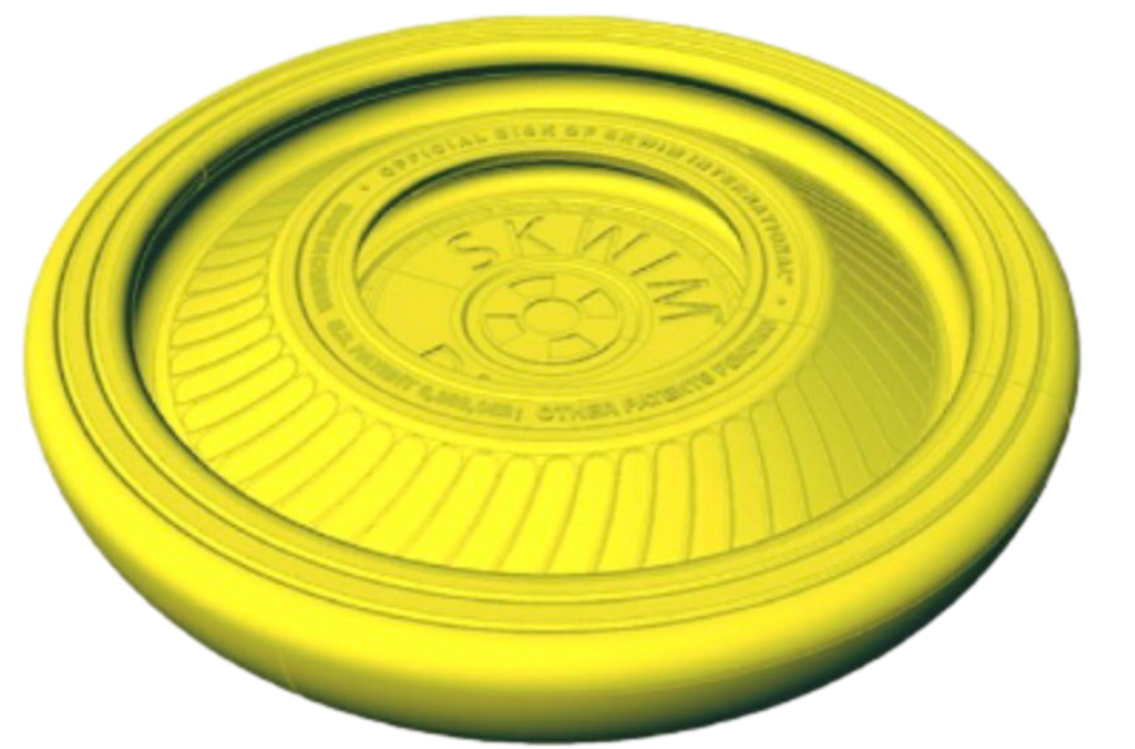SKWIM is played in a lagoon, often marked by a boundary
The boundary equipment establishes the lagoon and the filed of play for SKWIM games.
Boundary equipment
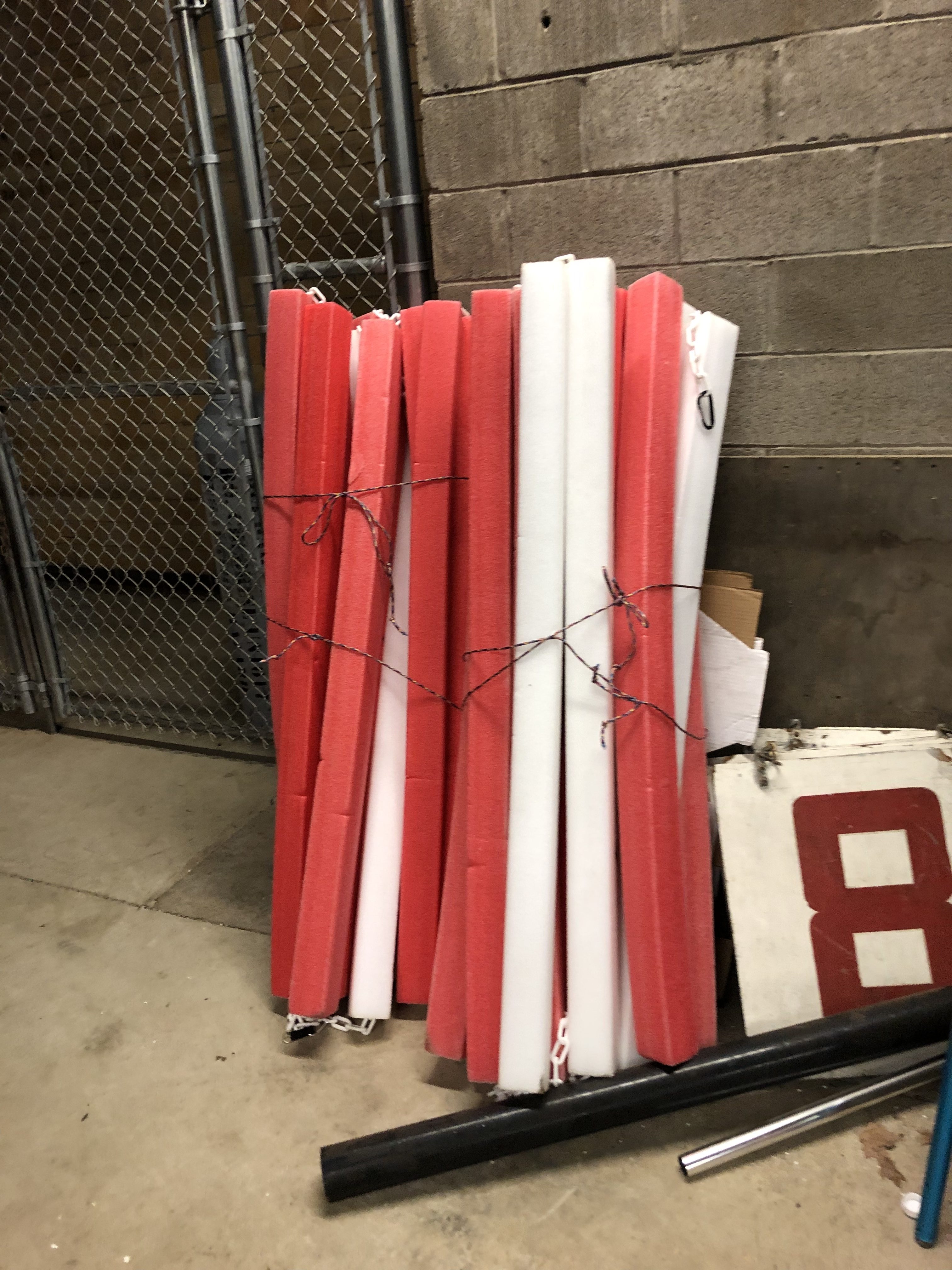
Boundary for SKWIM at Highland Park Pool garage
Bundle of boundary bits
It is easy to fold the boundary pieces, accordion style. Then a bungie cord is able to be wrapped around the outside, like a belt, and the pieces are held together. It is easy to carry the bundle of boundary bits as they are much lighter than a typical land line. These boundary bits were tied with string.
The chain stays within the boundary bits in storage for easier deployment.
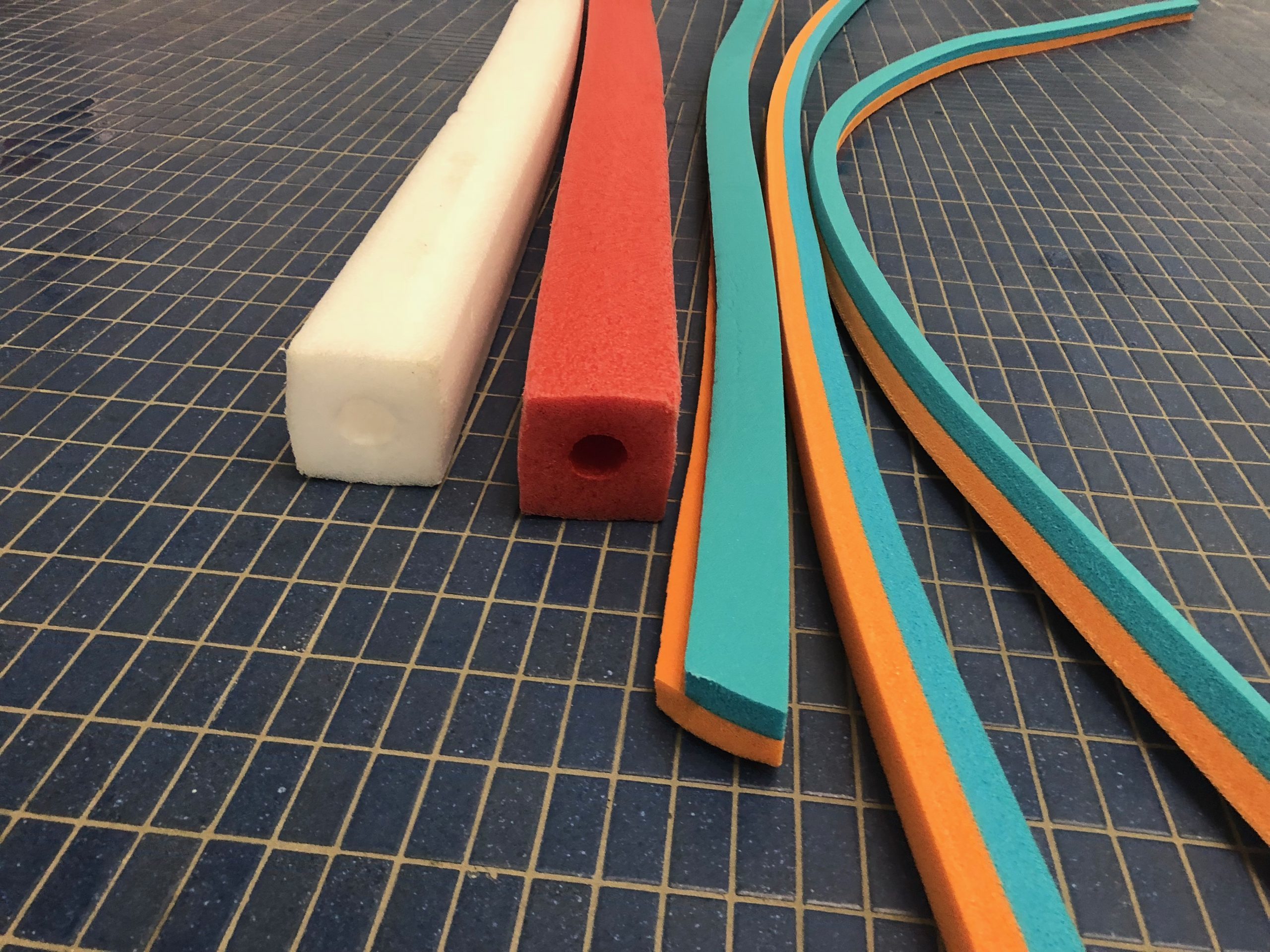
Both white and red pieces of the boundary have been made. The center hole and dimensions are the same. Other foam pieces were obtained in an effort to make an alternative. Those are the orange and green strips. But, they were of no commercial use.
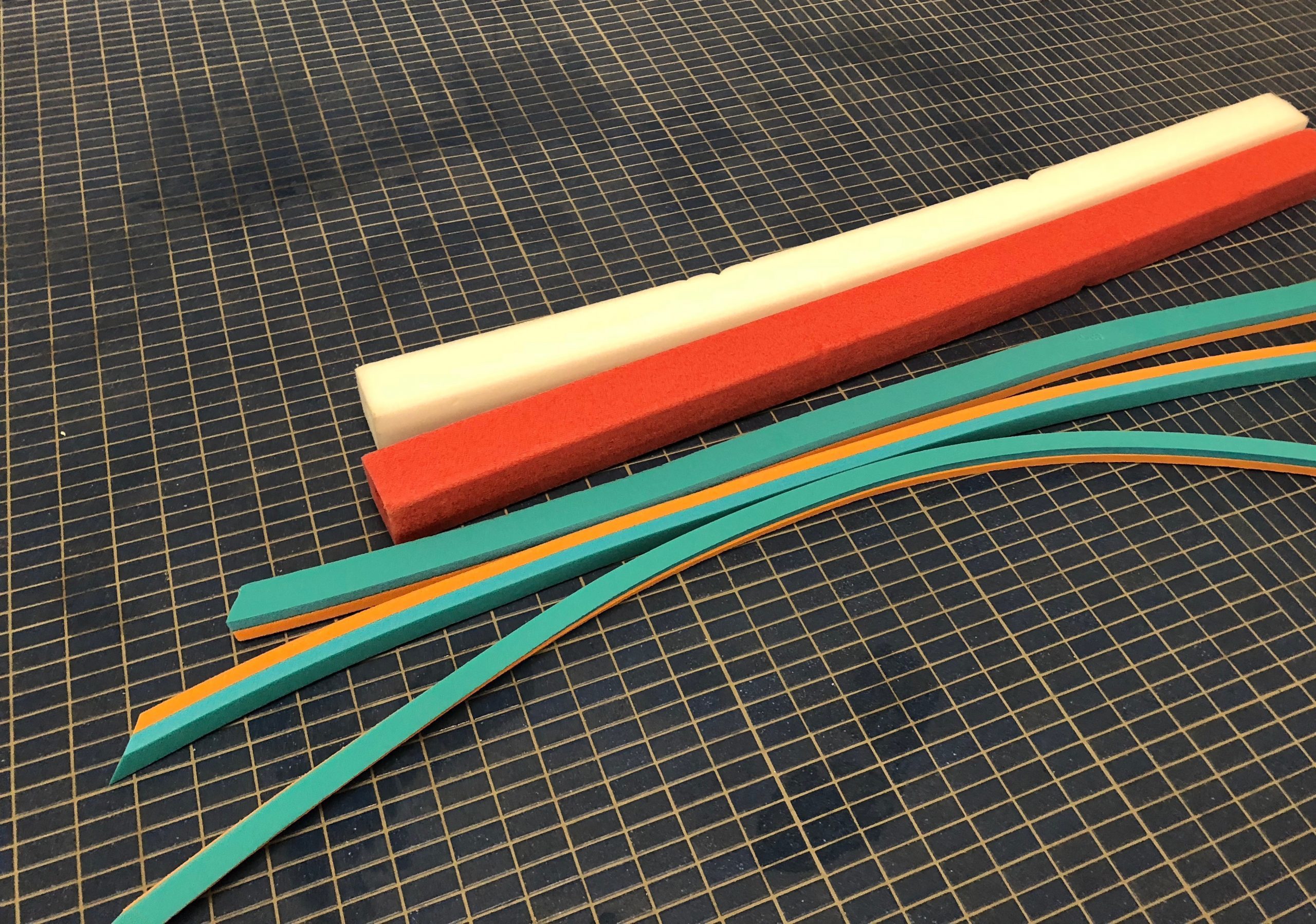
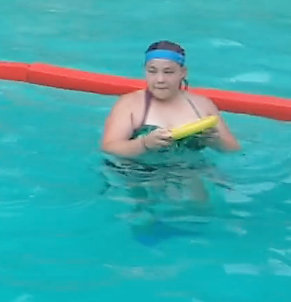
The boundary is necessary when a pool is of an extra large size. This pool at Windwood is bowl shaped.
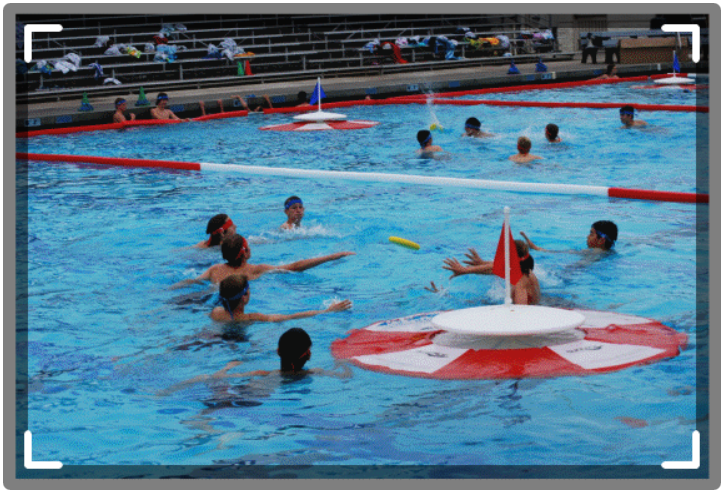
The boundary allows more than one game to be played and keep the focus and disk within one area.
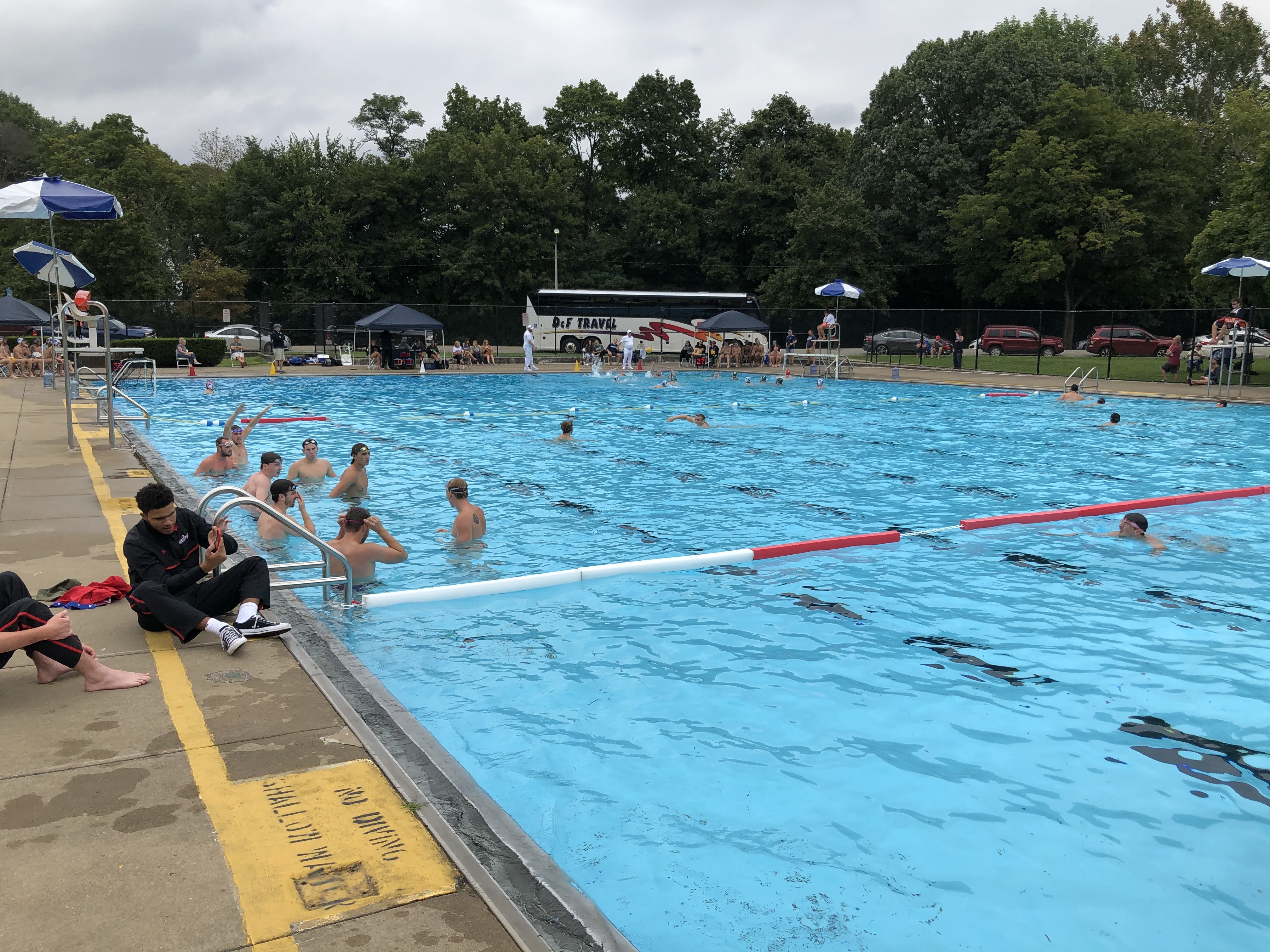
Divider and boundary with water polo in deep and SKWIM in shallow
The white pieces can be put at the end of the pool to designate a score zone, or end zone.
The players can score in the ULTIMATE game of SKWIM when they pass the disk to a teammate who retrieves the disk in the white zone. Often, in a competitive swimming pool, the end zone is easily marked with the backstroke flags. However, in camp settings, or at this photo when water polo was being played in the deep end, backstroke flags are not in use. So, a boundary with a contrasting color is an important part of the game.
The boundary is held together on its length by the white chain. Then a bungie cord is tied to the ladder and the end of the chain for easy attachment. Plus, the bungie cord is able to expand and contract if needed, providing a bit of give to the boundary.
The boundary pieces can also be used in a water polo setting as well. There is a 2-meter area from the goal-line. Players on offense can't enter the 2-meter area unless the ball is present, otherwise, it is off-sides. A red boundary can be used, as show in the distance in the photo above.
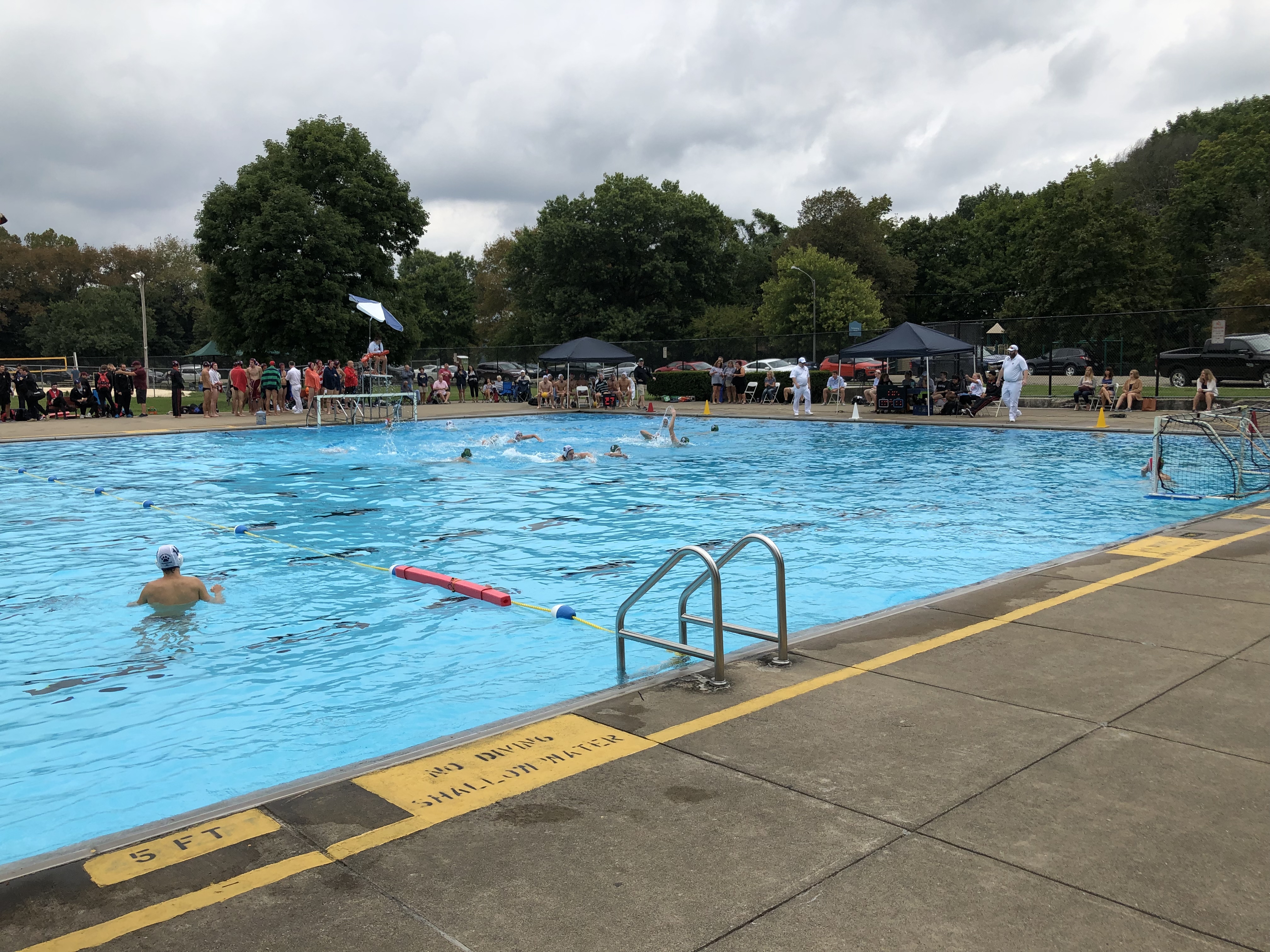
Long view of water polo at Highland Park Pool. The red marker attached to a regular rope is a SKWIM boundary that marks the 2-meter area for the water polo game.
The red boundary is held to a typical safety rope at the far sideline of a water polo game with zip ties.
Image Gallery of photos that show the SKWIM Boundary
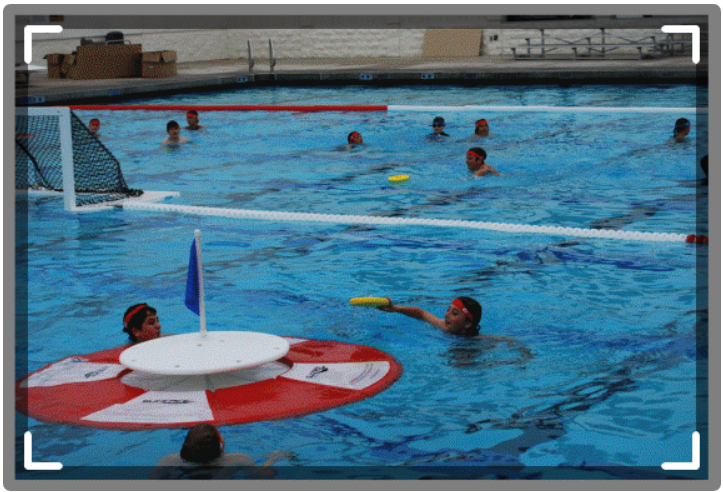
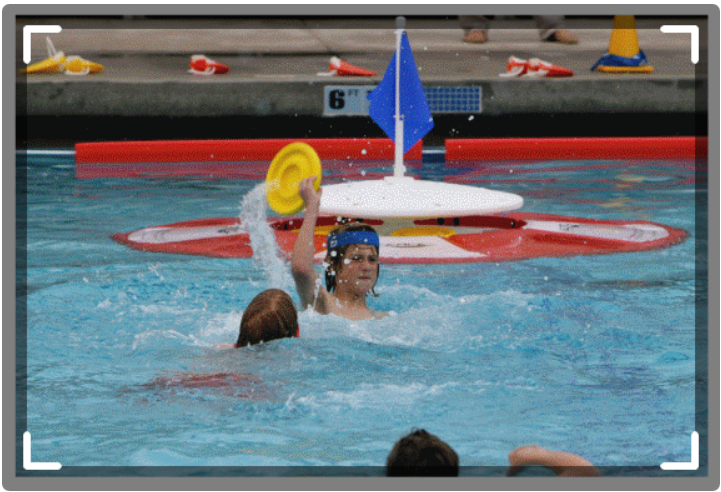
SKWIM player getting ready for a rainbow pass
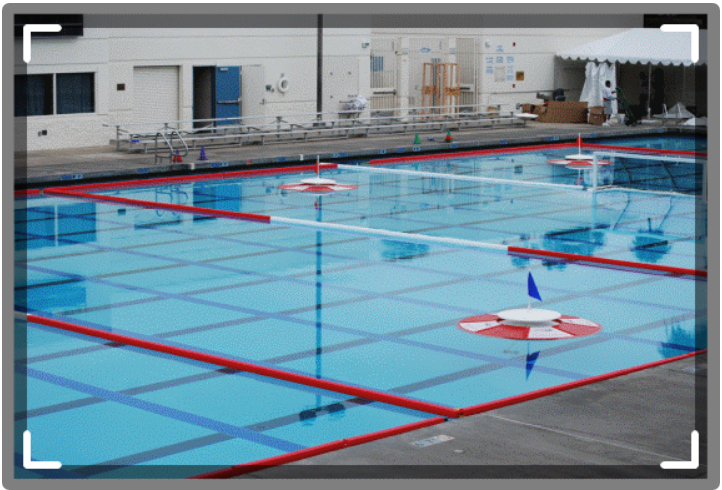
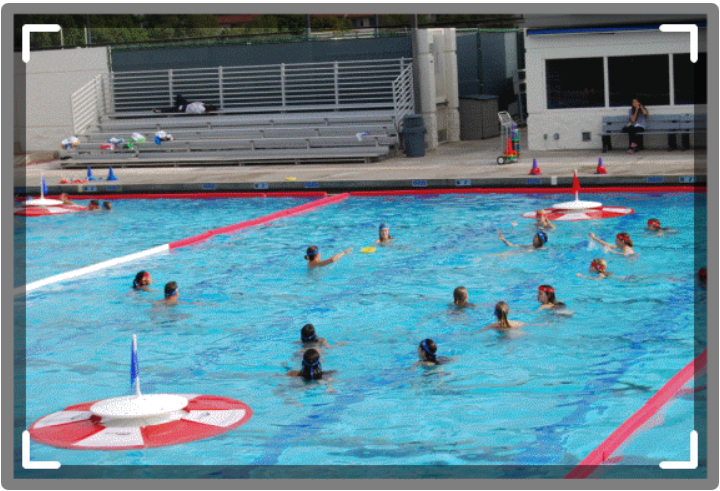
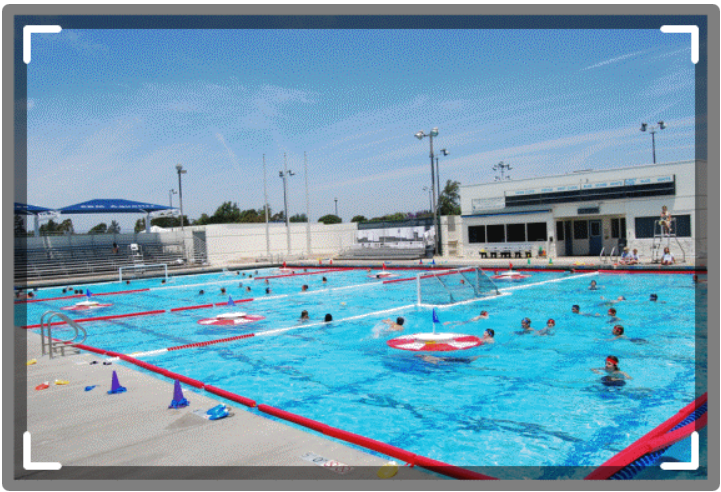
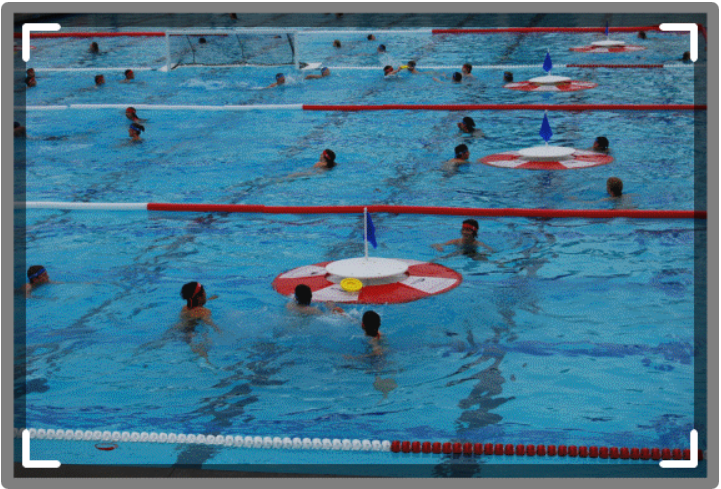
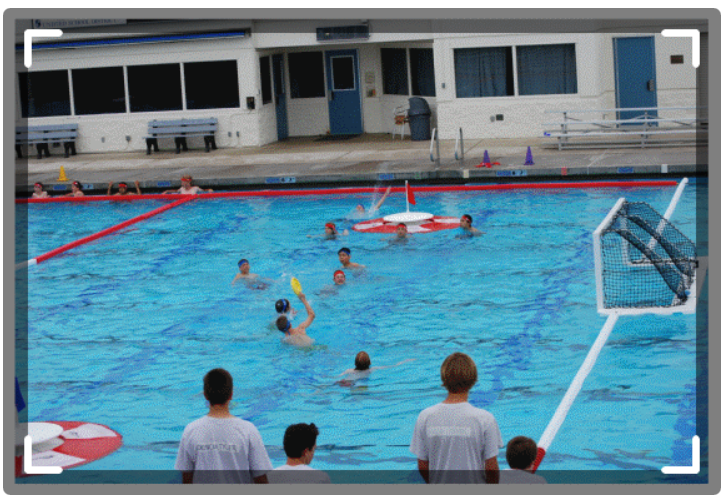
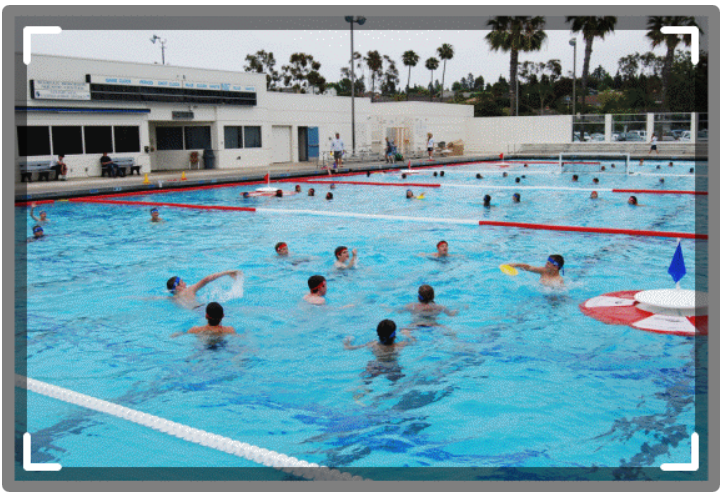
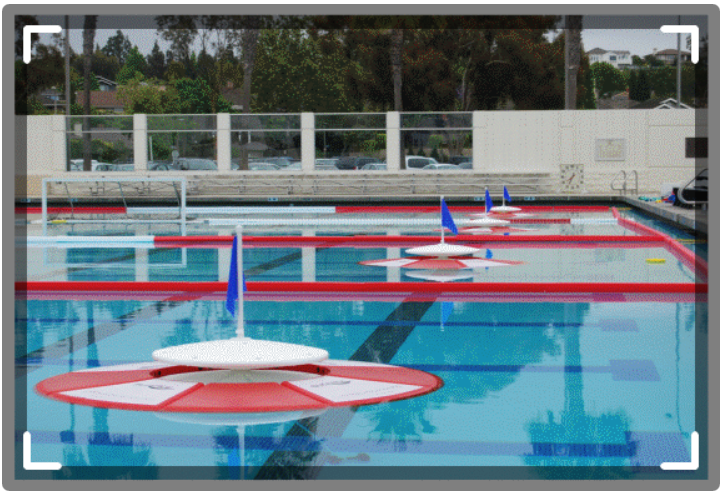
A great advantage for the boundary zones includes safety. Bumping against a softer divider, rather than a wall or a lane line, is forgiving. This 50-meter pool by 25-meter pool was set up with 4 different lagoons. the white sections in the middle can also serve as a 2-point or 3-point shot, if that is part of your house rules too.
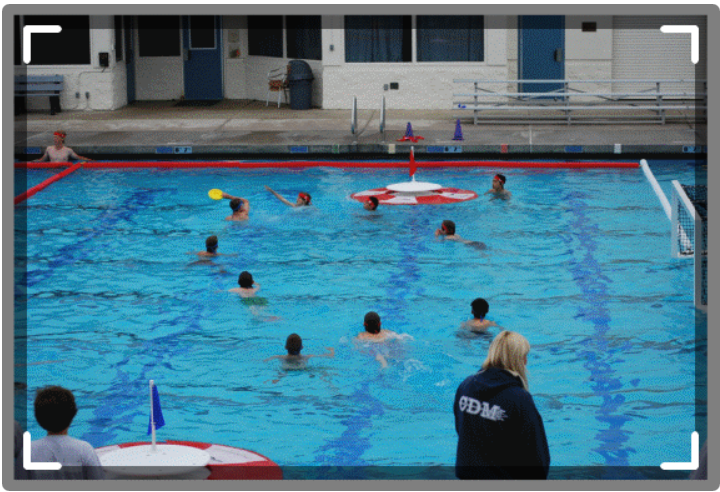
Notice the water polo goal to the right sideline. Game seems to be 5-vs-5.
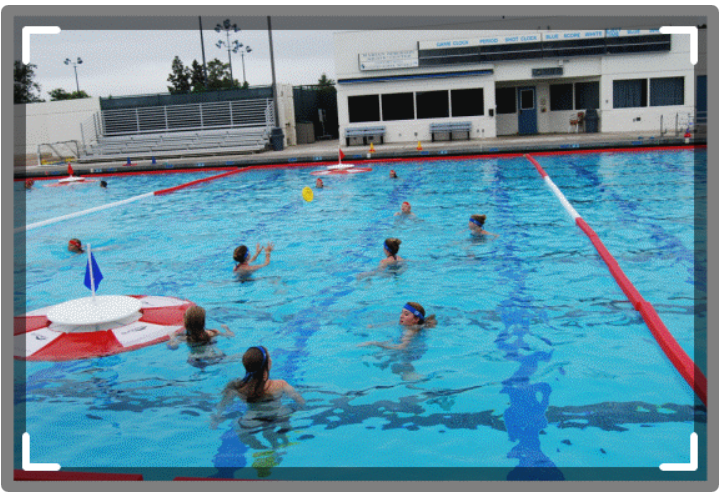
Play!

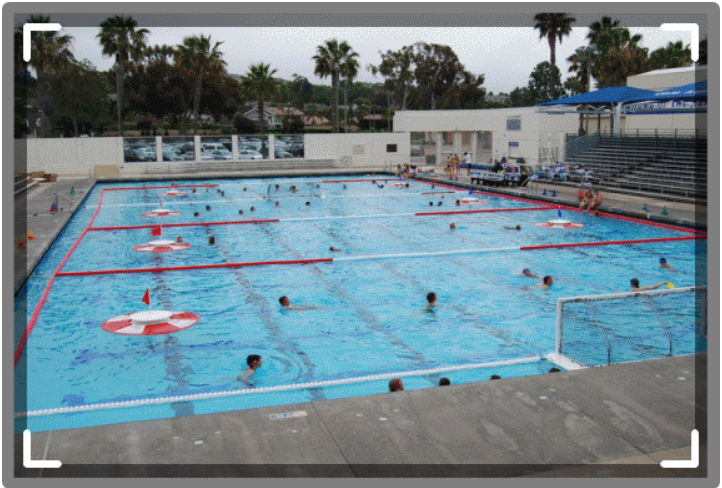
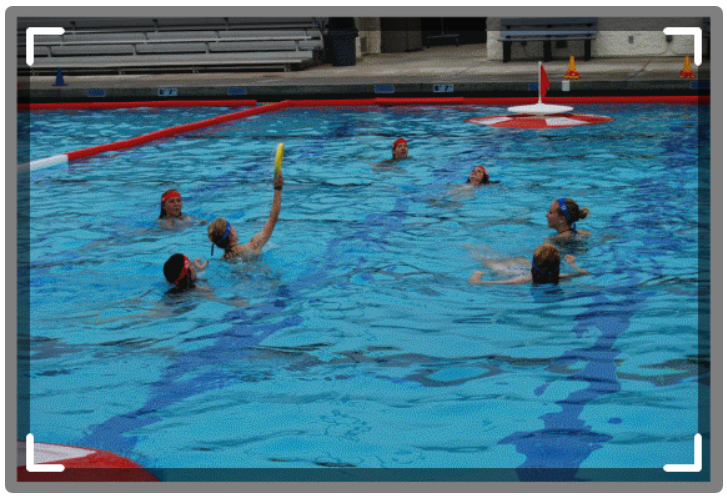
A rainbow pass is a long, tall, arching delivery of the disk to the other end.
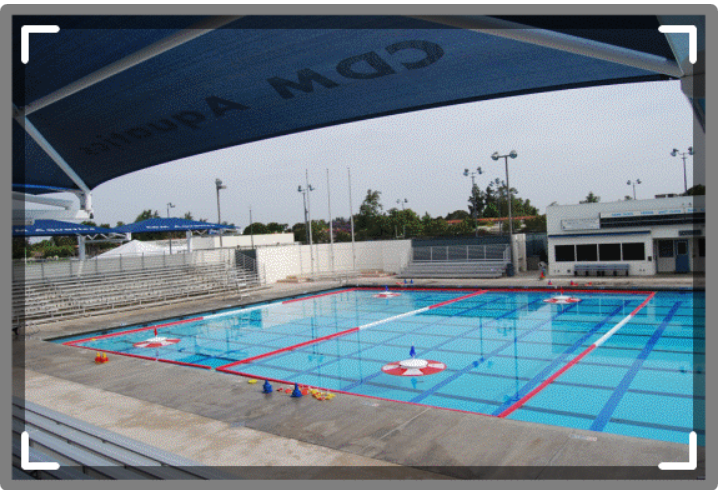
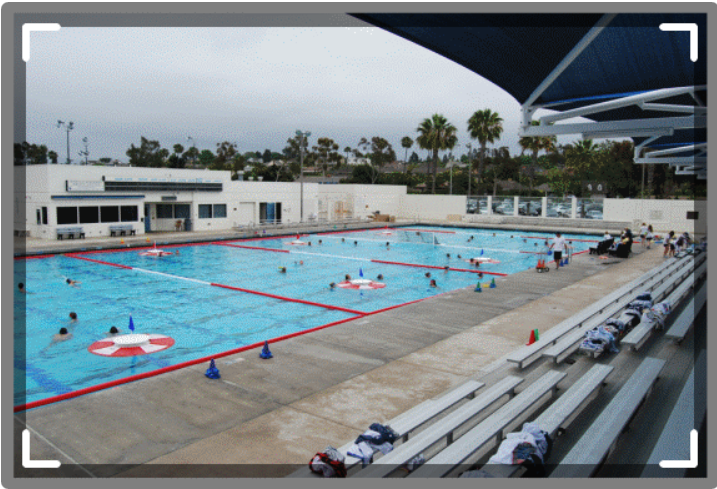
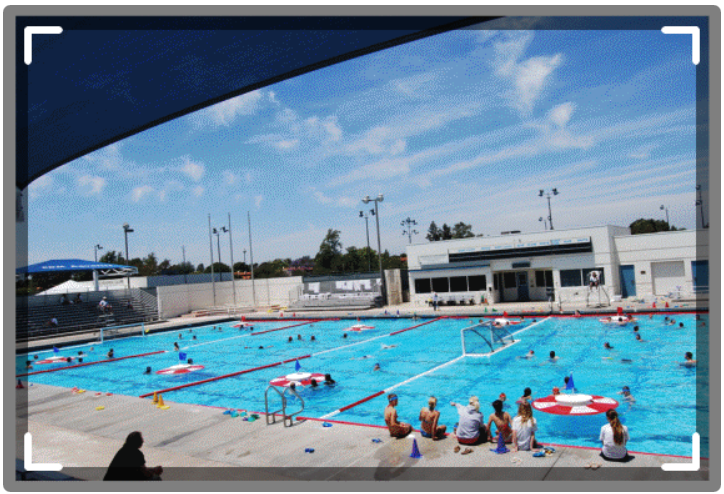
Three SKWIM games easily fit into one area played by a single game of water polo. Furthermore, the SKWIM games can played with eight on a side, more than what happens in water polo with its seven athletes on each team. SKWIM could be played, depending upon the number of students in the activity, with 10 and even 12 to a side. It is less than ideal, but at camps, SKWIM has been played with 20+ per team. And, SKWIM can be played in both shallow water as well as deeper water.
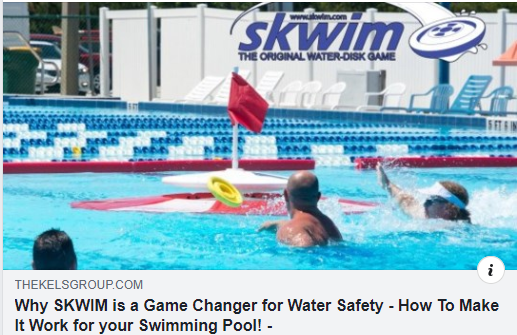
Alternative, idea = square lane lines
Tall, square lane lines would be a great alternative and aid for the game-play of SKWIM. Rather than round disks, use square ones. And, the square bits would need to have a 90-degree face in the water, not 45-degrees, as the result would be much like a round lane line.
With typical lane lines and their round build, the disk hits it and flies over the rope. Wanted is a lane divider that stops the disk and keeps it in play.
This lane line design would be expensive to tool. And, if the materials could be foam and soft, such as the materials of the SKWIM disk, it would be ideal.
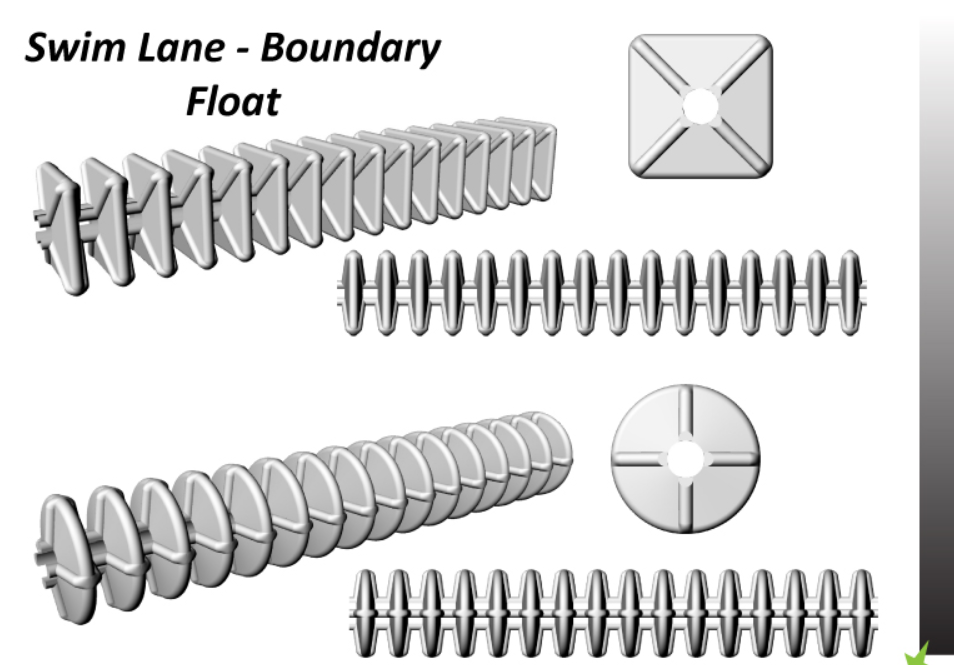
Alternative idea 2: Tested concept with the factory in Cleveland.
These could work. We do want to double the height with at least 5 layers to make a fantastic boarder. But, that taller boundary would only be used in places where it was needed, such as between lap-swim lanes and a SKWIM Lagoon. The taller height would not be needed at the end of the pool.
A one-inch wide nylon belt would make a better connection, rather than the bungie that was shown in the photos.
We designed a corner piece too. This was more like a baseball base that could accept a bungie for an anchor in open water out of the middle. Plus it could accept other directions, 4 ways.
Finally, a bench / storage system was something that was designed so that the foam strips could be laid flat, protected from the sun and out of the way.
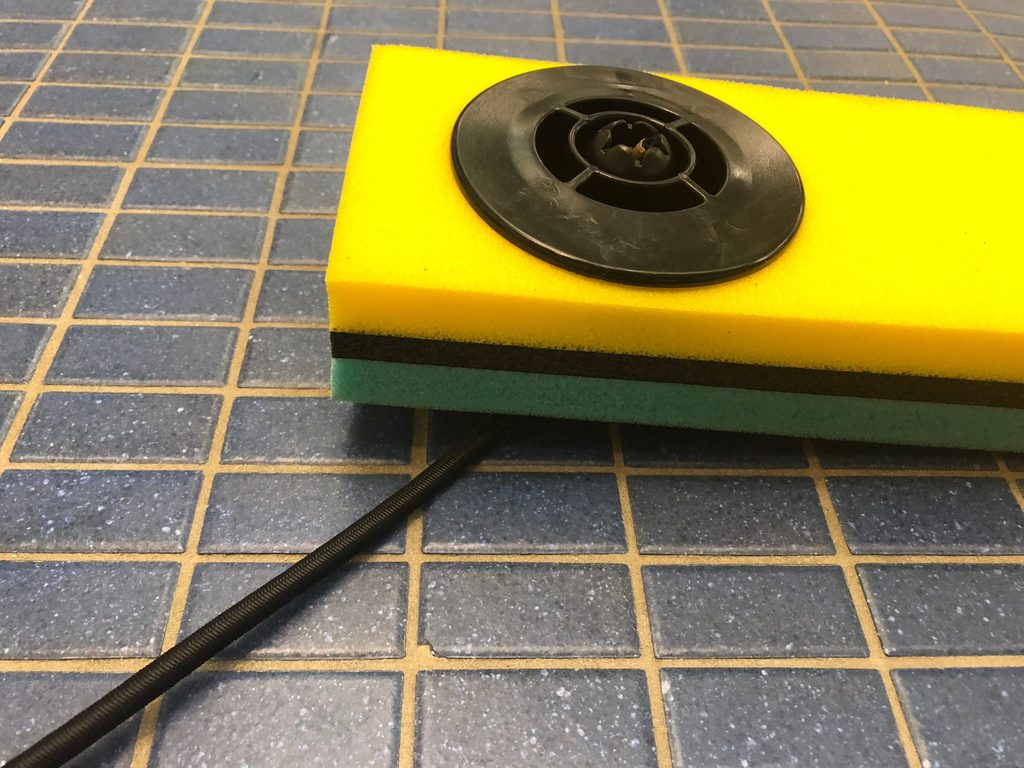
Shows a bungie attachment at the end of a 3-layer strip.
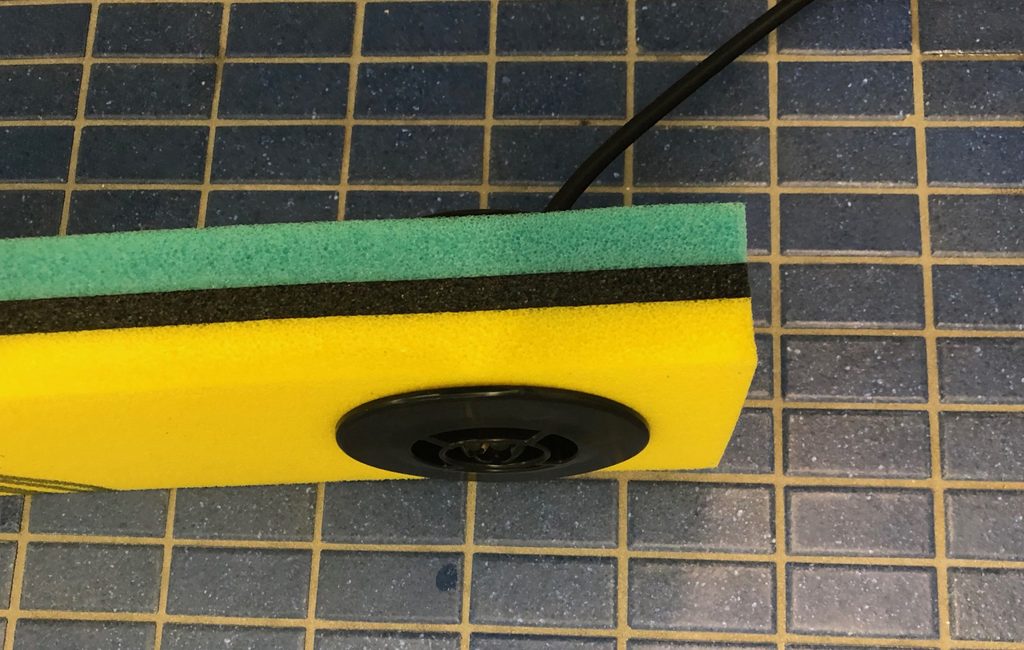
Three layers are good for certain uses, but not tall enough for blocking the SKWIM disk. We'd want a 5-layer by stacking.
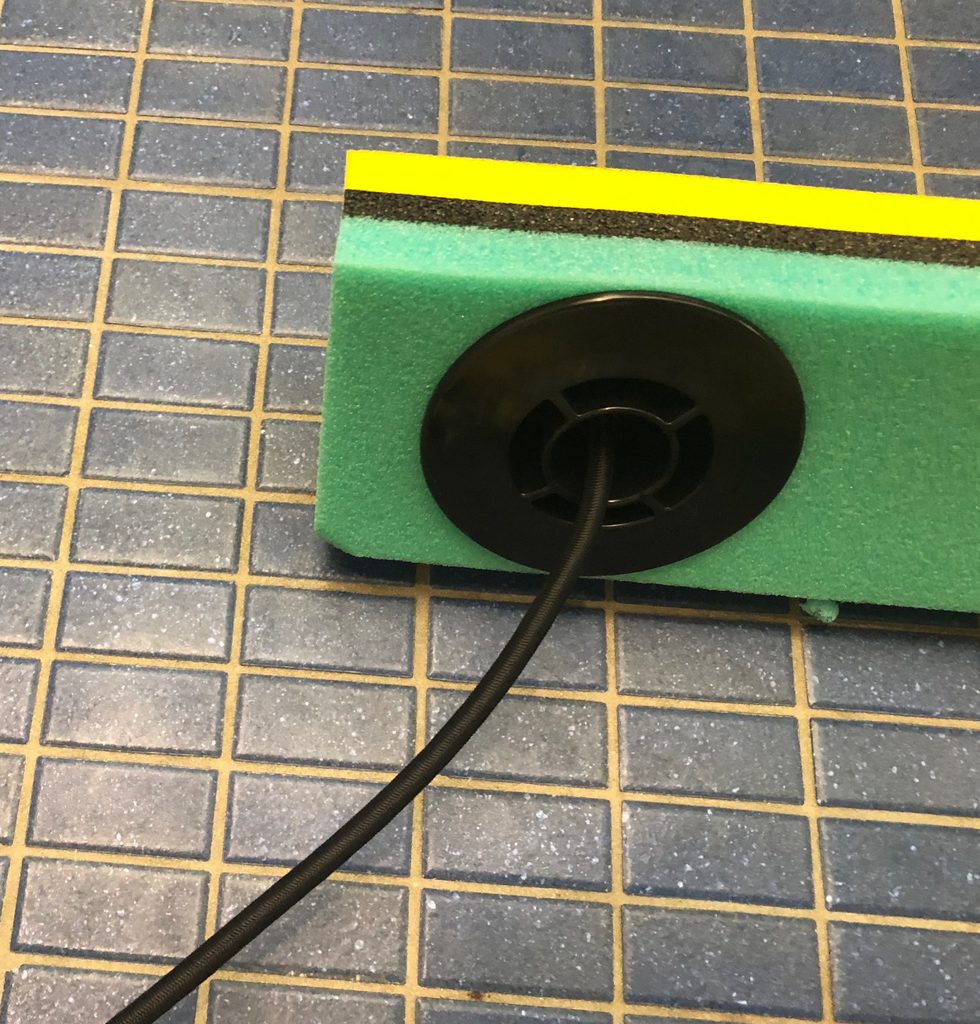
Side piece.
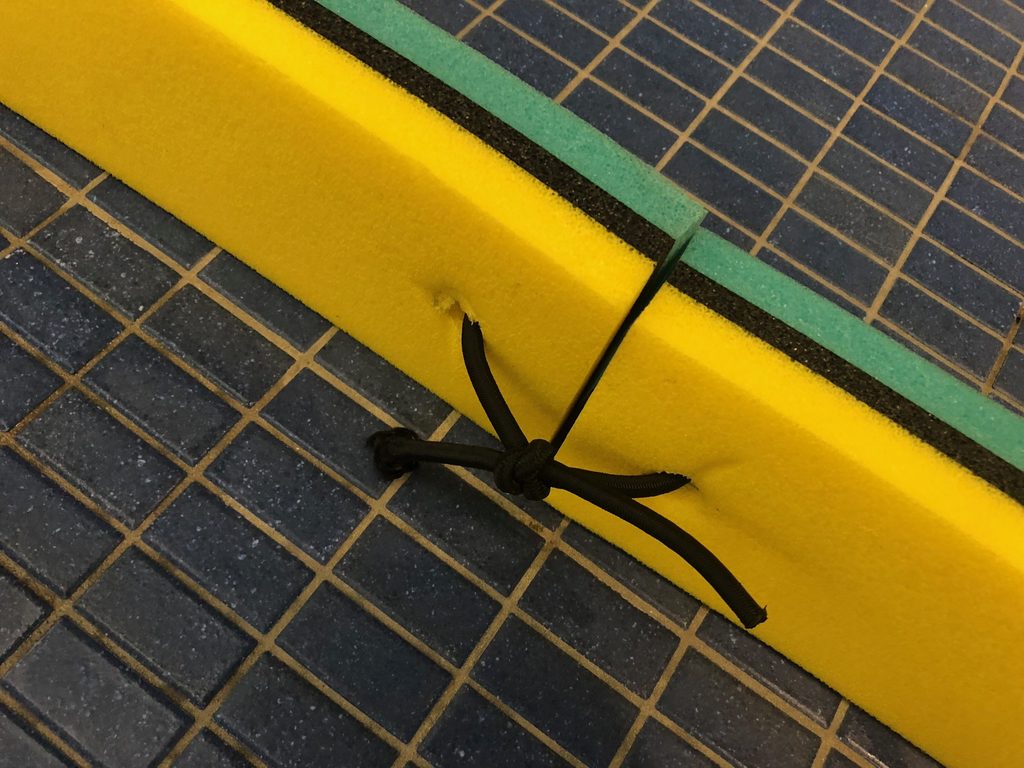
Simple tie was used to prototype. A nylon belt would work better.
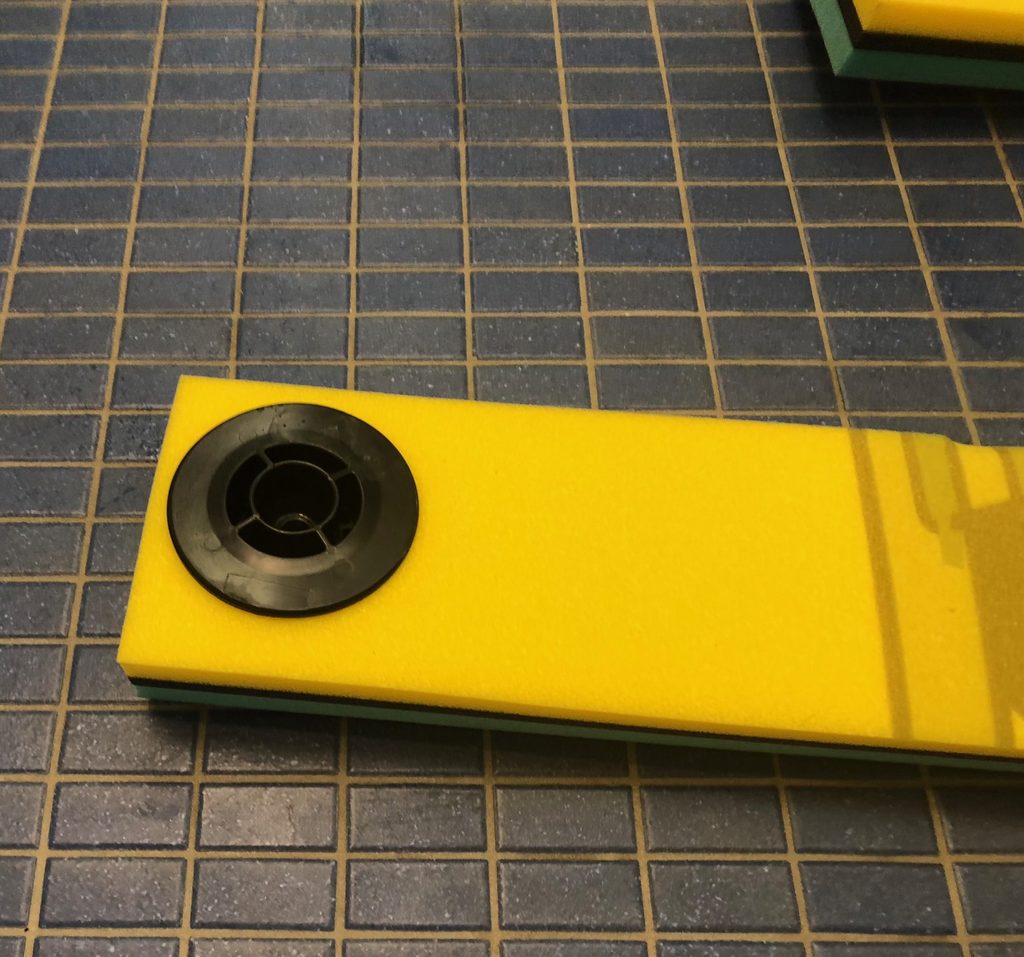
Single strip
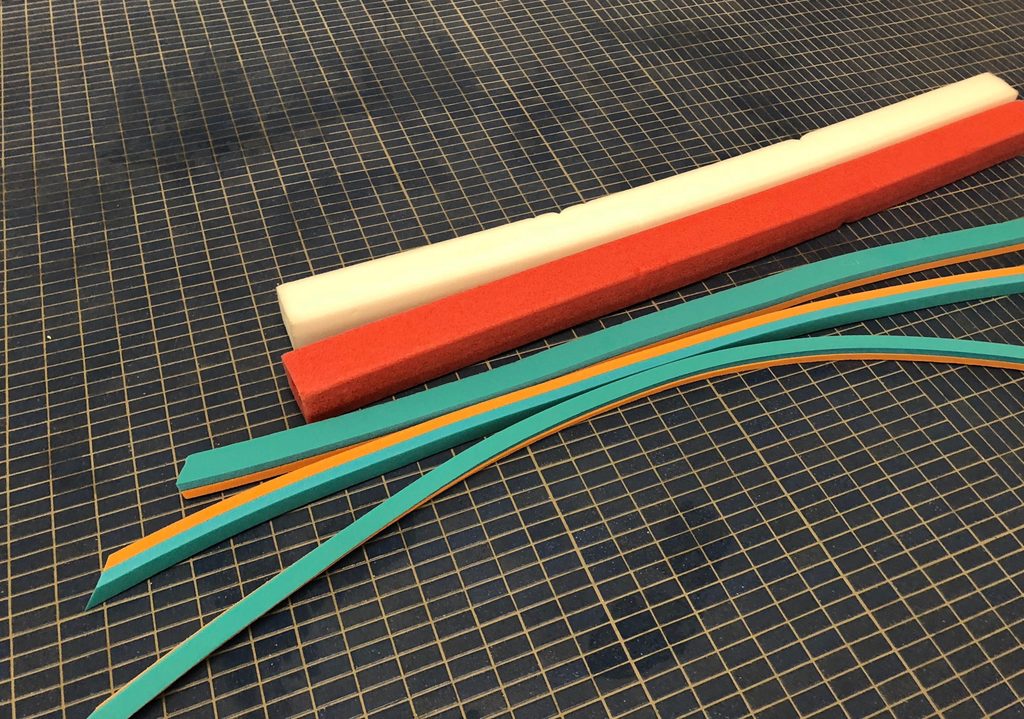
The regulation boundary and some strips obtained from the factory for testing. We wanted to bundle them together, but it failed as a concept.
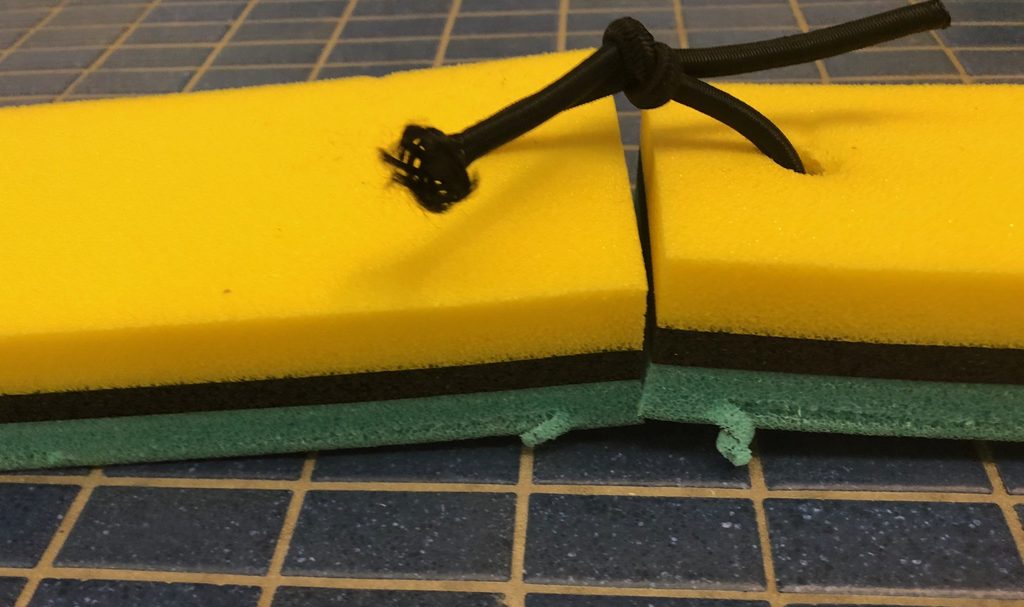
Shows the tied style. Not ideal.
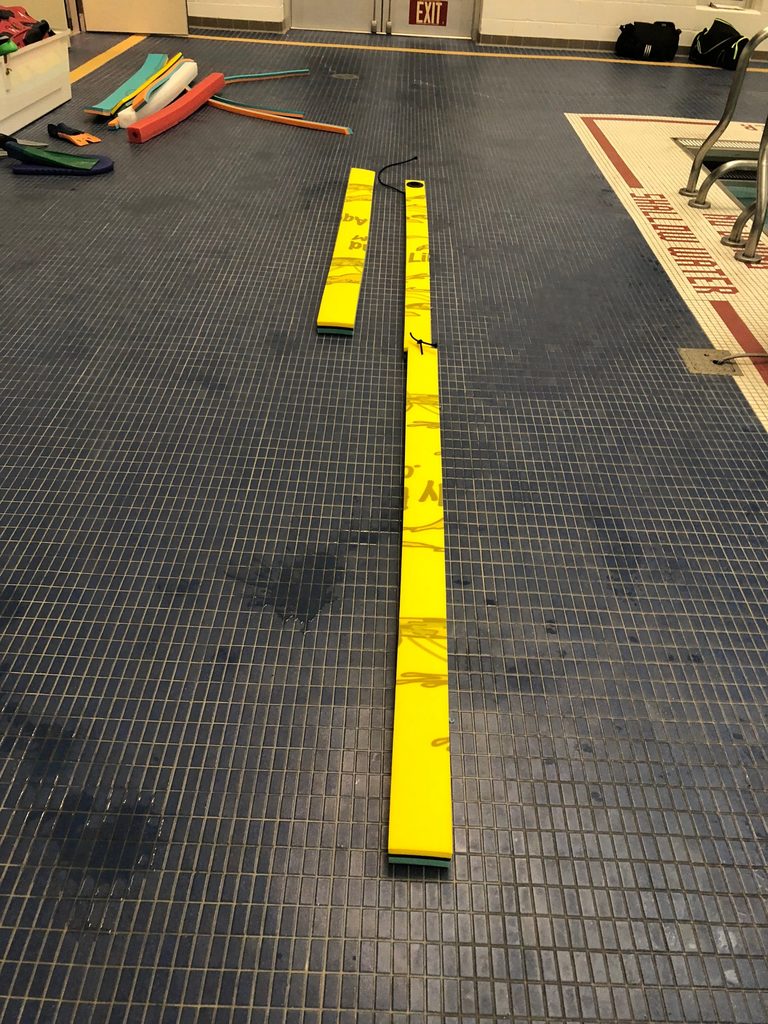
The strips can be made end to end to make a lane line, sorta.
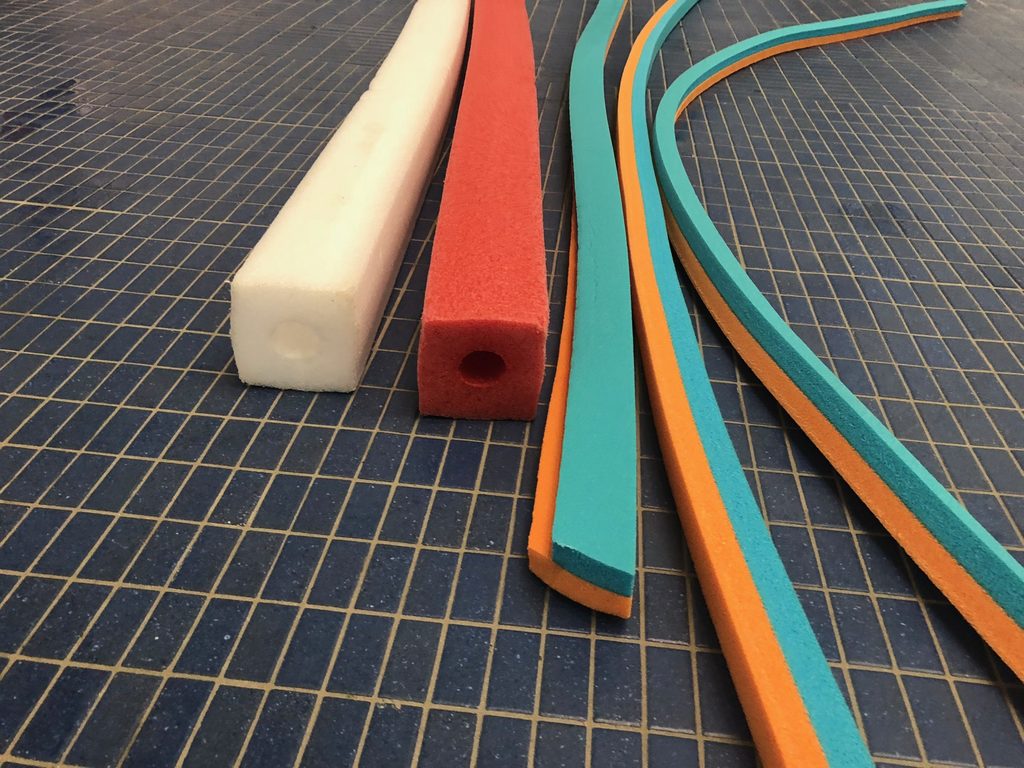
Both white and red pieces of the boundary have been made. The center hole and dimensions are the same. Other foam pieces were obtained in an effort to make an alternative. Those are the orange and green strips. But, they were of no commercial use.
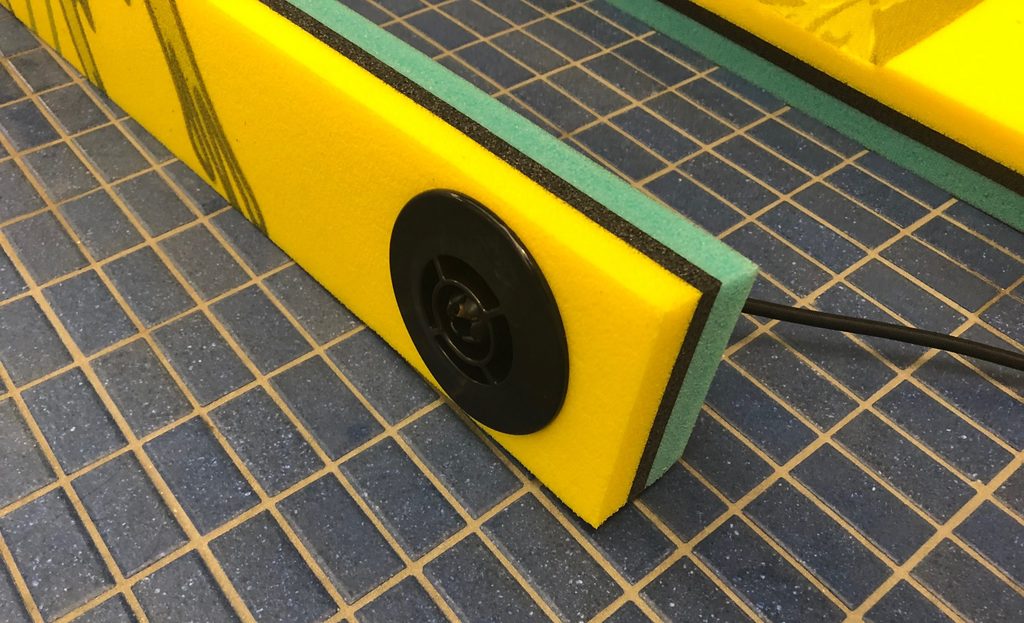
Strip
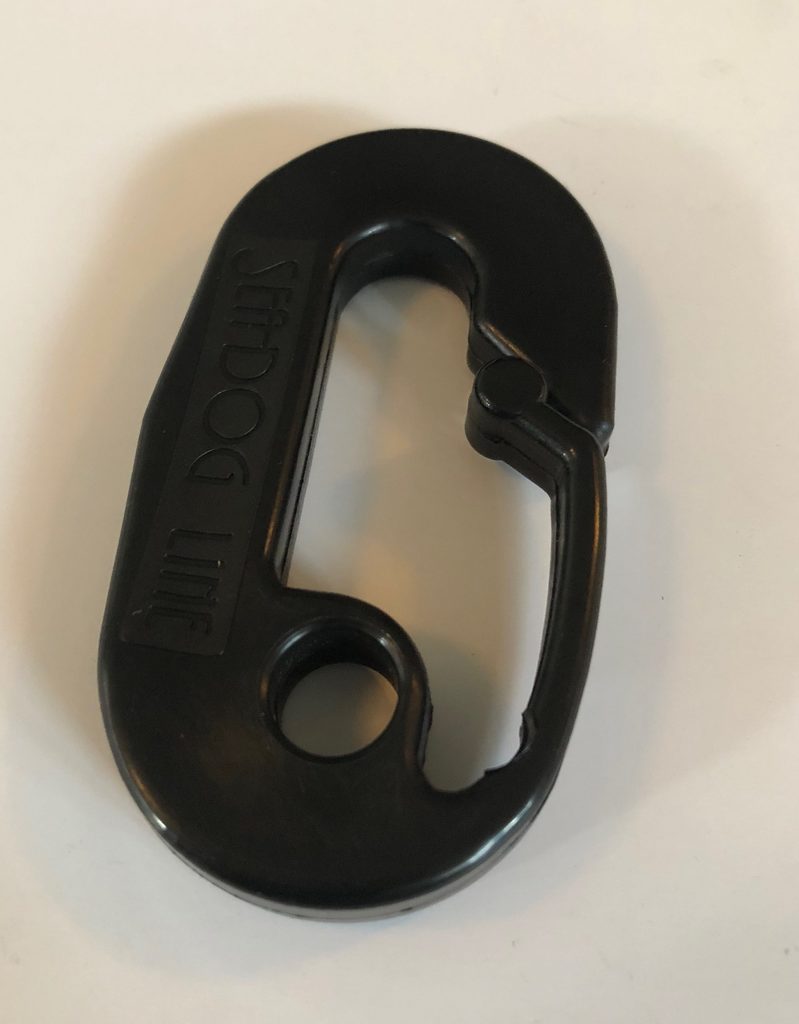
A safe clip used for securing the Aqua-Lilly-Pad materials to an anchor or clip at a ladder, etc.
